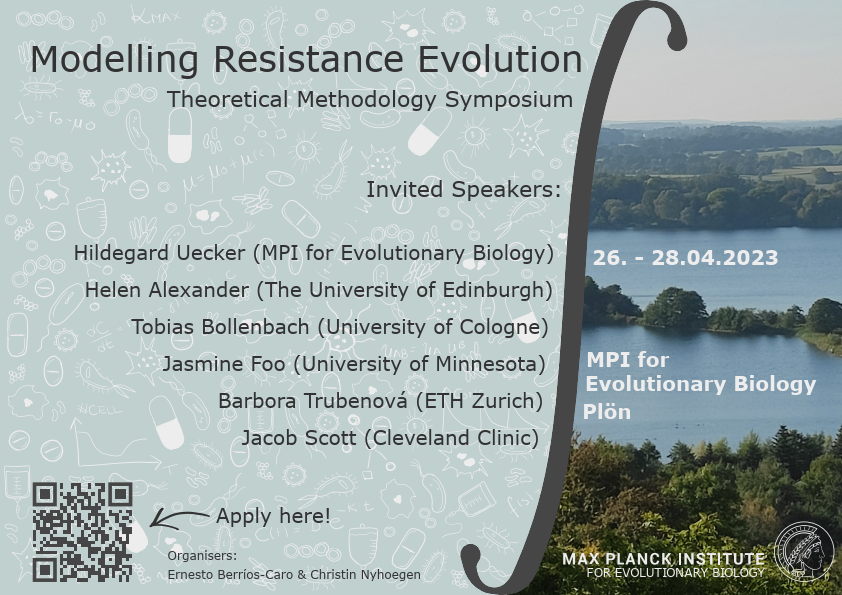Speaker
Description
The antibiotic response of bacterial pathogens can be altered by interactions with other species of bacteria which have been suggested as a cause for treatment failure and resistance development in polymicrobial infections. This study aims to investigate the influence of interspecies interactions on the pharmacodynamics of antibiotics which may guide design of treatment strategies. We constructed an individual-based model of an interactive bacterial community consisting of multiple species. Two types of interspecies interactions are incorporated which can negatively or positively affect either the bacteria's susceptibility to drugs or their growth potential. The modelled interactions reflect mechanisms of collective resistance, growth enhancement and impairment mediated via an exchange of signals or nutrients. The in silico bacterial population was simulated with either type of interaction in the presence of different types of antibiotic drugs at constant concentration. Therefor the in silico bacterial population is placed on a two-dimensional grid where individual bacteria can move around, interact with neighboring bacteria, replicate, die and are exposed to antibiotics. Sensitivity changes in single cells as a result of interactions are not heritable, however the presence of interactions influences the selective pressure of the drug locally, which can lead to an optimized spatial arrangement of the population over time. Analysis of the focal pathogen's sensitivity to the drugs showed that both the type of interaction and the type of drug determine how the pharmacodynamics of the focal pathogen are impacted which can be predicted qualitatively. Furthermore, we found that changes in the movement speed and the interaction distance influence the magnitude of the impact of interactions on bacterial sensitivity for some drugs. When bacteria move more slowly, the bacterial population benefits more from beneficial interactions and is more resilient against harmful interactions in the presence of bactericidal drugs. Similarly, when interactions have a larger interaction distance, beneficial interactions affecting the bacteria's susceptibility are less beneficial while harmful interactions of any type are more harmful in the presence of any type of drug than when they have a short interaction distance. We think these results reflect changes in the spatial arrangement of the population over time which optimize the number of interactions between the species to their benefit. While a slower movement speed supports the development of an optimized spatial arrangement of the bacteria on the grid, a larger interaction distance hinders it. In conclusion, we can identify types of drugs most resilient or sensitive to interaction effects for each interaction type. We suggest the movement speed of bacteria and the maximal interaction distance, which both alter the magnitude of the impact of interactions, as potential treatment targets for polymicrobial infections. Additionally, the developed single cell level model is a flexible framework which is extendable and can be used in future research of polymicrobial infections. We are planning to incorporate random resistance mutations in single cells to investigate how interspecies interaction as well as population heterogeneity influence the evolution of antimicrobial resistance during treatment.

